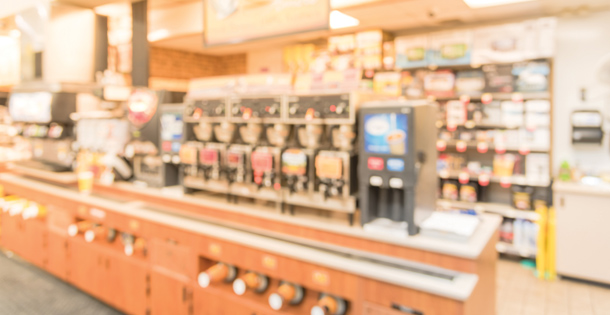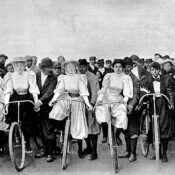I once loved the distinctive fragrance of gas stations. These days, regrettably, it is but a faint memory. In its place, at thousands of sleek stations across America, you’re likely to inhale an incongruous noseful of car-wash detergent, hot ham hoagies, and beer. Blech! I favor the intoxicating aroma of grease and engine lubricants.
So, you conclude, my wee brain was rotted by excessive exposure to petrol vapors? Possibly. But the fact of the matter is that the modern station — so clean and anodyne and barely about gasoline at all — is a soulless thing.
Most newer ones are little more than appendages to convenience stores and are illuminated, you might be tempted to guess, by the same folks who light sports stadiums. They are focused on fueling drivers; the pumps and cars are an afterthought. That’s not entirely a horrible development. It’s a sweet moment indeed when you can pull off the road, wash up in a restroom, and grab some decent food.
Still, do you recall those iconic little stations patterned after colonial and English cottages, meant to mimic “a home away from home”? Uniformed assistants would greet you, the weary traveler, offering free road maps, a comfy chair if needed, and service bays in which friendly techs could fiddle with your ailing vehicle. Pretty much ancient history, all of that. (Secretly, don’t you wish you’d filched a sign from a White Eagle or Wofford station? The auction value of gas station memorabilia — especially antique pumps — can leverage you into a new electric vehicle, which, among other things, would mean never having to wait in a gas queue again.)
I conclude that most of today’s stations are essentially a contemporary iteration of the old general store, except they don’t sell feed for horses and everything occurs really fast. (According to industry stats, customers, on average, linger just 3 minutes and 33 seconds in these mini marts.) They compete against sandwich shops, grocers, pharmacies, car washes, souvenir stands, banks, and coffee joints. Their best-seller is soda. (In my neighborhood, some of the finest pizza around can be had at a small Shell station, and I’m not proud of that.)
Particularly disappointing about modern filling stations is that few remain in the repair business. Not much money in that — nor in filling cars’ tanks, for that matter. A five-cents-per-gallon profit is average. Consequently, owners have sought new ways to assure repeat business. One lesson most have learned is that a sparkling restroom is paramount. There’s even a smartphone app that directs drivers to the cleanest bathrooms along our major thoroughfares. (For the record, QuikTrip and Wawa stores are tops, nationally.)
“One in five people uses the restroom when they stop to buy gas,” I was told by Jeff Lenard, vice president of strategic initiatives at the National Association of Convenience Stores. “It’s really the front-door experience. If it’s a bad experience, no one will immediately say, ‘Let’s go get a sandwich now!’” No argument there.
Lenard is a veritable guru of gas stations. It was he who mentioned to me offhand that Col. Harland Sanders owned several large operations back in the ’50s. They eventually closed, but Sanders heeded the advice of loyal customers who urged him to “sell more of that chicken.” Also, interestingly, Frank Lloyd Wright had designed a few stations for the Buffalo area, Lenard said, but they never got built. Too architecturally challenging.
So, what’s next for American gas stations? I asked Lenard if the coming wave of electric cars will ding the business. Not likely, he said. “Forty million people a day fill up at gas pumps. Demand is still light for charging stations.” Overall, business remains strong, Lenard said, “but like with air travel, the glamour days are gone.”
In the last issue, Neuhaus wrote about astrology’s return and sudden rise in popularity.
This article is featured in the September/October 2018 issue of The Saturday Evening Post. Subscribe to the magazine for more art, inspiring stories, fiction, humor, and features from our archives.
Become a Saturday Evening Post member and enjoy unlimited access. Subscribe now



